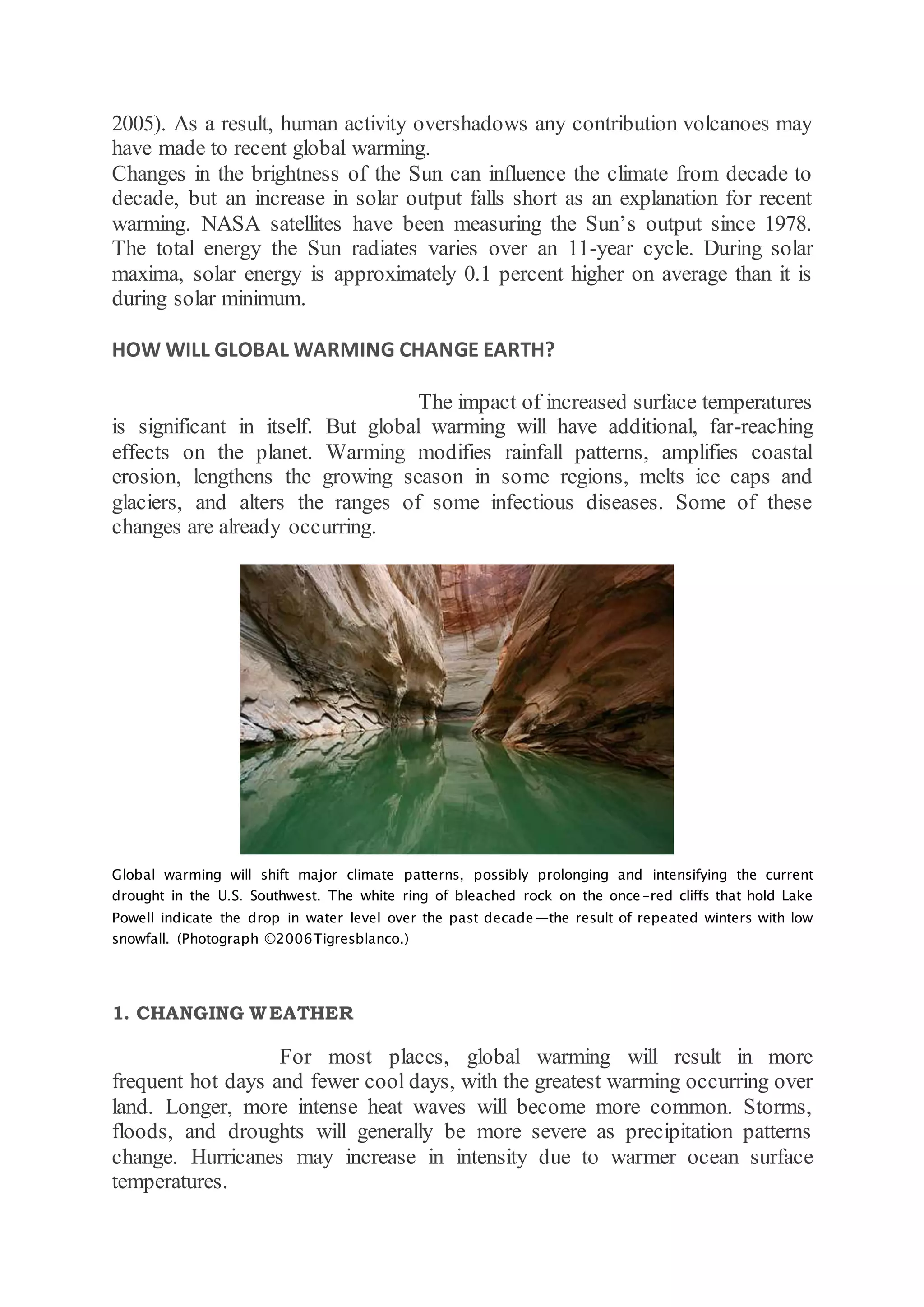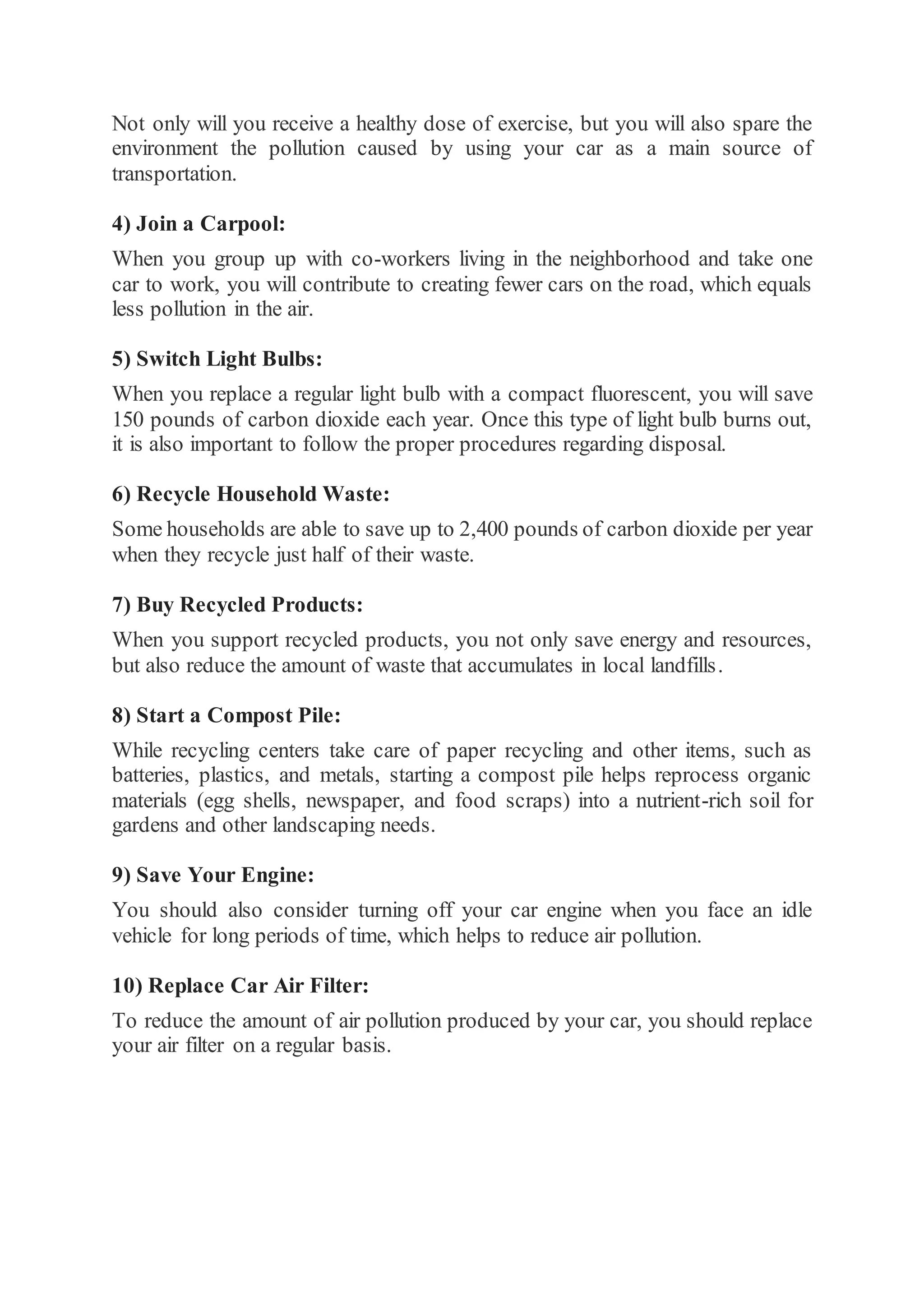This document discusses the causes and impacts of global warming. It begins by explaining that while Earth's climate has naturally varied in the past due to factors like orbital shifts and solar activity, the dominant influence now is human activity. It then describes the natural greenhouse effect and how greenhouse gases like carbon dioxide trap heat in the lower atmosphere, making the planet warmer than it would otherwise be. However, the warming seen recently cannot be explained by natural causes alone. Human emissions of greenhouse gases, which far exceed levels from other sources like volcanoes, are the main driver of current warming according to scientists. The impacts of continued warming will include changes to weather patterns, rising sea levels, pressure on ecosystems, and effects on human communities and activities.






